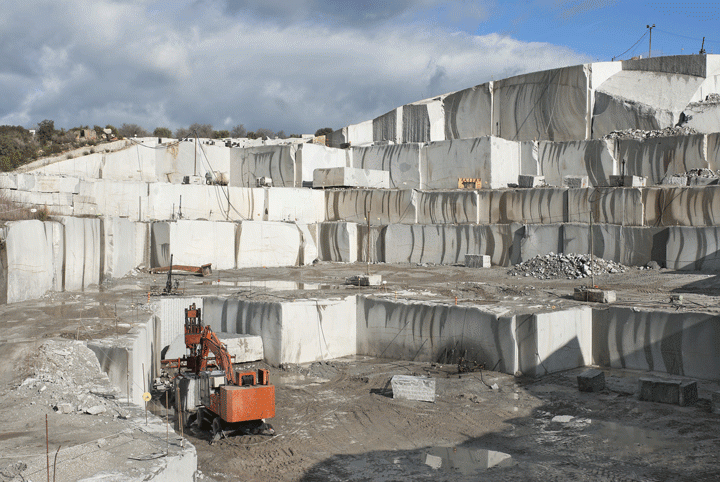Revealing Granite Quarries in South Africa Tradition: A Trip With Quarries
Revealing Granite Quarries in South Africa Tradition: A Trip With Quarries
Blog Article
Discovering the Rich History and Sustainable Practices of Granite Quarrying
As we base on the precipice of revealing the detailed tapestry of granite quarrying, a trip with time reveals not simply the physical act of drawing out stone however likewise the cultural and historical value woven right into the really material of this technique. From the ancient origins that laid the foundation for contemporary quarrying strategies to the sustainable practices that are forming the future of this industry, each chisel mark on granite surfaces informs a tale waiting to be discovered (granite quarries in south africa). The tradition of granite quarrying extends much past plain extraction; it is a testament to human ingenuity, resilience, and the long-lasting allure of this stunning stone
Ancient Beginnings of Granite Quarrying
Dating back to old people, the practice of quarrying granite has actually been an integral component of human history and building innovation. The earliest evidence of granite quarrying dates back to ancient Egypt, where large pyramids and complex sculptures were crafted from this resilient stone. The Egyptians utilized primitive devices to draw out granite blocks from quarries, showcasing the value of this material in their huge constructions.
Moving onward in background, the Greeks also made substantial payments to the quarrying of granite. The Greeks made use of granite in different architectural wonders, such as temples and statuaries, demonstrating their skill in shaping and sculpting this durable rock. The Romans further fine-tuned the techniques of quarrying granite, employing sophisticated devices like chisels and hammers to extract and shape granite for their iconic frameworks.
Through the centuries, the technique of quarrying granite has progressed, with contemporary innovations improving performance while maintaining the timeless charm of this all-natural rock - granite quarries in south africa. From old people to modern building contractors, the heritage of granite quarrying proceeds to shape our world
Advancement of Quarrying Strategies
The development of quarrying techniques has been noted by a continual progression towards higher effectiveness and precision in extracting granite. From the rudimentary techniques utilized by our ancestors to the sophisticated technologies made use of in modern-day quarrying operations, the industry has actually undergone substantial innovations. Early quarrying methods involved manual work with fundamental tools such as knives, hammers, and wedges to draw out granite blocks from the planet. As worlds proceeded, methods like fire-setting and primitive nitroglycerins were presented to promote the removal process.
Advancements in computer-controlled devices and 3D modeling have maximized quarrying procedures, leading to very little environmental influence and boosted sustainability practices. As the demand for granite proceeds to increase, the evolution of quarrying methods continues to be indispensable to conference sector requires effectively and sustainably.
Cultural Importance of Granite
Granite holds an extensive social importance across various human beings due to its long-lasting visibility in architectural work of arts and admired monuments. The cultural significance of granite prolongs past its physical features; it personifies strength, security, and timelessness, making it a sign of withstanding heritages and traditions.

Sustainable Practices in Quarrying
Among the abundant history of granite quarrying and its social importance lies an expanding emphasis on lasting practices within the sector. As ecological awareness and issues about resource depletion have heightened worldwide, the quarrying field has actually progressively embraced sustainable methods to decrease its effect on the see here atmosphere and surrounding communities.

Moreover, reclamation and recovery of quarry websites post-extraction are integral to lasting practices. By bring back quarried areas to a natural or beneficial state, such as creating wildlife habitats or entertainment areas, quarriers can offset the environmental footprint of their procedures and add positively to the local community.
Legacy of Granite Quarrying
With a historic backdrop soaked in craftsmanship and industrial progression, what withstanding impact has granite quarrying left on the landscape of modern-day culture? The heritage of granite quarrying goes beyond plain removal practices; it has actually shaped architectural marvels, city landscapes, and cultural heritage worldwide. The durable nature of granite has actually made it a recommended option for monoliths, buildings, and infrastructure, standing as a testimony to the ability and virtuosity of quarry workers across generations.
Additionally, the economic footprint of granite quarrying can not be neglected. The market continues to offer job opportunity and drive neighborhood economies in regions where granite removal prevails. It has likewise stimulated technological improvements in quarrying strategies and equipment, causing much more efficient and sustainable methods.
In regards to sustainability, the heritage of granite quarrying consists of efforts to mitigate ecological influences via recovery jobs and liable resource monitoring. By balancing financial rate of interests with ecological stewardship, the sector strives to make certain that future generations can remain to gain from this i was reading this long-lasting all-natural resource.
Verdict

Report this page